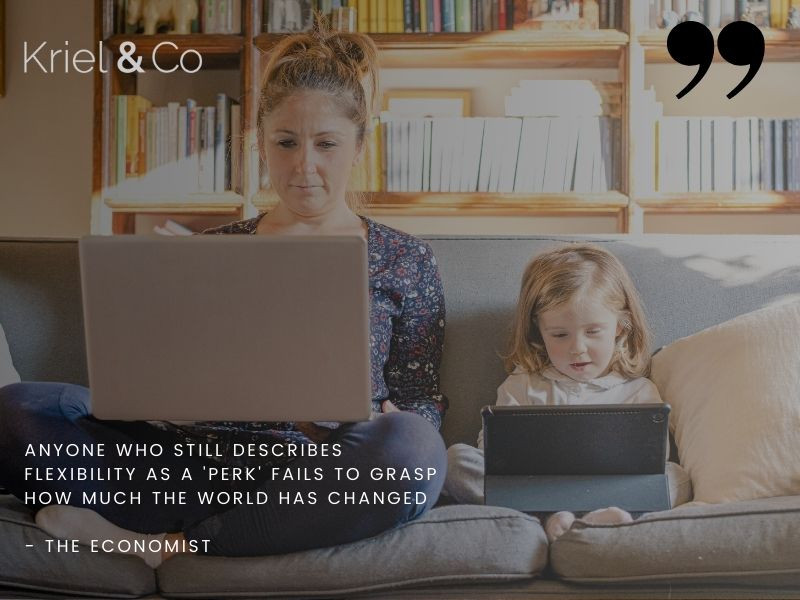Navigating mentorship initiatives in a hybrid work environment.
07 July 2022
Technological advances and a virtual work hub allow teams to learn and develop new skills quicker than ever before. Creating diverse opportunities for different mentoring structures should be put at the top of the list to ensure both personal and professional growth.
In a predominantly virtual work world, the limited personal interaction with leadership and our colleagues has impacted our professional relationships with each other and our work. We have previously discussed that while a hybrid work model offers benefits such as flexibility and greater inclusion, the lack of face-to-face engagement could hamper creativity and spontaneous collaboration amongst teams.
Research recently conducted by Dr Lebene Soga of Henley Business School has shown that 85% of employees worldwide are not fully engaged in their work. With hybrid working solutions adopted in many workplaces around South Africa, employers find it difficult to measure employee engagement and fulfilment at work.
As personal and work lives have become more blended, allegiance and loyalty in the workplace have also shifted and having rapport and fostering relationships can be tricky.
Mentorship programs can act as the bridge that can connect colleagues and, when done efficiently, help build connection and meaning in the hybrid workspace.
Mentorship is a vital component of a successful and resilient organisational culture
A 2021 survey by Price Waterhouse Cooper (PWC) found that a large number of businesses and HR leaders worldwide noticed a rise in productivity during the pandemic due to hybrid and remote working systems; however, less than one-third of leaders surveyed were confident they were cultivating high levels of trust between teams and team leaders.
Mentorship opportunities among peers and more experienced colleagues develop skills and talent, allowing new team members to become entrenched in the organisational workings, clients, and fellow team members. Traditionally, mentorship programs were an opportunity to work together on projects, create strategies, or work on client pitches. These collaborations effectively become a deliberate platform for teaching, coaching, networking, and developing talent.
A hybrid work environment challenge business leaders to create a balance between in-person and digital working mentorship sessions.
Mentorship structures
Reimagining mentorship may be part of the solution for building professional connections, developing careers, and creating a sense of belonging in new workplace setups. Fashioning a new mould for mentoring programs can help organisations address the unmet needs of today’s workforce.
Creating connection and support between employees and retaining high potential junior talent and ensuring strong post-pandemic succession planning requires consistent and committed mentoring relationships.
Regardless of what the workspace looks like post-pandemic, the three key mentoring structures remain:
- One-on-one mentoring allows for strong relationships to be built between team leaders/ mentors and team members; this environment creates an open space to ask questions, facilitate training and goal setting initiatives and encourage engagement.
- Group mentoring becomes a valuable tool for team members to learn from each other and share skills across divisions.
- Reverse mentoring has become particularly beneficial in the remote work environment. This mentorship structure is defined by younger individuals mentoring more experienced or senior team members, often concerning technological assets, social media or consumer trends.
Naturally, the best mentorship programs are the ones where all parties involved learn alongside each other. In a mixed medium environment, hybrid systems allow for greater perspectives, diversity and learning initiatives.
How to nurture mentorship in a hybrid work environment
Researchers David Megginson and David Clutterbuck, cofounders of the European Mentoring & Coaching Council, indicate that the two most important components for effective mentoring, regardless of the platform, are building rapport and creating clarity of purpose.
These core components are addressed by investing time in meaningful connections with team members, both online and in person.
Rapport is established through mutual trust, respect and a strong communication connection. Guided conversational questions become essential in understanding employees' strengths, weaknesses, and desires for professional growth. Planned topics lead to interesting and relevant discussions between team leaders and team members while simultaneously creating clarity and purpose within the mentorship sessions.
In a hybrid work environment, it is important to create such rapport through face-to-face (in-person or online) mentorship opportunities as well as understand how interactive mentoring can be facilitated through virtual workspaces. We further investigate these mentorship approaches below.
Face-to-face mentorship:
A key contributor to meaningful mentorship is authentic human connection and relationship building. Having face time with team members, especially those newly onboarded or young talent, is a great way to get to know them personally, understand their goals, and determine where they want to develop within the organisation.
In a hybrid mentorship setup, mentors must take advantage of the time they spend with their mentees in person. Having constructive discussions, forming connections and establishing open lines of communication and trust are best achieved through both formal and informal in-person meetings. Connecting with team members on a deeper, more personal level and going beyond office small talk is beneficial for establishing a personal connection and gauging overall contentment.
One-on-one in-person mentorship guidance often allows for greater interpretation of check-in goals as body language plays a significant role in how questions and answers are understood. Take note that these subtle nuances might easily be missed on virtual channels. Understanding how team members express themselves in social environments often allows for a greater appreciation of these subtexts in a virtual mentorship capacity. It is thus essential that management create opportunities for team members and team leaders to interact in person, especially when team members are matched with a mentor in a different geographical location.
Contact mentoring creates a great space for participants to work together in an interactive environment and is optimal for new team member induction, soft skill training, brainstorming, planning and feedback. Although online sessions are more likely to stay within allocated time allotments, in-person contact sessions might, in some scenarios, save time and close the gap for situations of miscommunication.
To optimise one-on-one mentoring, accessible hours must be considered, for both in-person and telephonic sessions, to create a harmonious and effective time schedule.
Virtual mentorship:
In most hybrid work environments, all the tools to connect in a hybrid system are already in play; however, for successful mentorship programs to take place, it is important to emphasise the right connection tools relevant to the team. Team leaders and mentors are encouraged to be more intentional about how these tools are to be used to facilitate optimal engagement and connection with team members.
Implementing a multipronged approach in mentorship programs can foster a productive relationship and confirm alignment between individual goals and organisational needs.
As the central principles of mentorship remain the same, regardless of the shift online, both parties involved will have to commit to finding ways to connect and make the desired communication connection meaningful.
Online tools can facilitate feedback in the virtual space and allow for simplified guidance through informal digital interactions creating a comfortable rapport between team leaders and team members.
Recognising how significantly personal and professional lives are intersected in a hybrid model is a powerful basis for building an online relationship. In the virtual space, ‘human connection’ creates a space in which both parties acknowledge that children and pets have become part of the adjusted work/life business space. Finding ways to embrace the differences in working styles and turning the limitations into another method of learning will help create a great mentorship environment online.
Digital tools allowing for synchronised working are a great asset to online mentoring as both parties are actively engaged on the same document or job and are able to take pride in the joint progress made as a team. The ability to transcribe and record online mentoring sessions also enables team leaders to reflect on past conversations and acknowledge growth patterns.
As significant as virtual mentorship can be, it will be key to consider elements of screen fatigue and email overwhelm, being mindful of preventing mentorship initiatives from being seen as task-oriented relationships.





